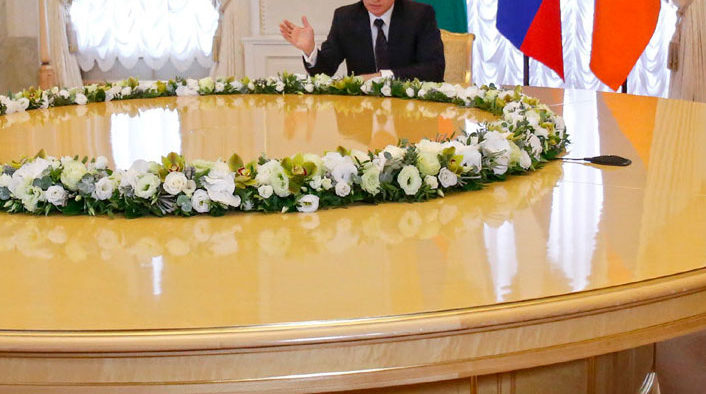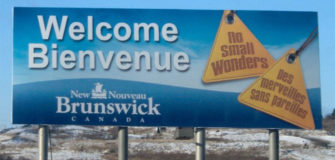Nagorno-Karabakh: Can it Ever be Solved?

 The second Nagorno-Karabakh war erupted in 2016
The second Nagorno-Karabakh war erupted in 2016
The history of the Armenian-Azerbaijani conflict over Nagorno-Karabakh (NK) goes back to WW1 and the events following the demise of the Russian Empire. Both Armenia and Azerbaijan declared their independence in 1918. In 1922, after the establishment of the Soviet Union, a new Nagorno-Karabakh Autonomous Oblast, with a nearly entirely Armenian population, was created and incorporated into the Azerbaijan Soviet Socialist Republic (SSR). Bref, in seeking to tame the independence movements of the South Caucasus, the Bolsheviks effectively planted a time-bomb for future territorial disputes between Armenians and Azerbaijanis.
The Karabakh conflict returned to the international fore in 1988, as the Soviet project approached its end. That year, the Supreme Council of the Nagorno-Karabakh Autonomous Oblast declared its intention to secede from the Azerbaijan SSR, and to seek incorporation into the Armenian SSR. At the time, Armenians accounted for some 80 per cent of the NK population. The secessionist push was met with a ferocious response, starting with pogroms and interethnic clashes, which deteriorated into all-out war by 1992. (The Soviet Union had dissolved by 1991.)
The ceasefire agreement signed in May of 1994 reflected the fact that the new NK forces, supported by what was by then the Russian army, controlled most of the territory of NK and also seven adjacent regions of Azerbaijan proper. Manifestly, Azerbaijan, supported by Turkey, did not recognize the secession of NK, and insists to this day that the issue must be solved according to the international legal principle of the territorial integrity of states and the inviolability of borders (based on the post-Soviet borders of each of the former Soviet Union’s 15 constituent republics).
In 1994, the OSCE Minsk Group was established to settle the conflict. The group today includes eight countries (Belarus, Germany, Italy, Sweden, Finland and Turkey, as well as Armenia and Azerbaijan). Since 1997, the group has been led by the US, Russia and France. It has tabled serious options for resolution of the conflict – since 2007, on the basis of the so-called Madrid principles of territorial integrity, the right to self-determination, and peaceful conflict resolution – as well as a number of critical tactical steps like the withdrawal of troops from territories around NK, defining the status of NK, the return of refugees to their places of residence, and the deployment of peacekeepers. Of course, the fact that the NK representatives themselves do not formally participate in these negotiations poses a serious problem for the prospect of terminal resolution.
Ceasefire violations ramped up from early 2012, coinciding with a halt in the negotiations between Yerevan and Baku, and the scale of hostilities grew. Heavy artillery was reintroduced into the theatre, and sniper activity intensified. Against a background of rising military budgets, remilitarization of the NK theatre, and more heated rhetoric between Armenia and Azerbaijan, a new (second) Karabakh war broke out on April 2nd, 2016. It lasted only four days, but both parties suffered: hundreds of Armenian and Azerbaijani servicemen were killed, as well as some civilians from Karabakh villages.
What were the principal reasons for the resumption of hostilities in NK after 22 years of fragile ceasefire? The first one was, as mentioned, the growing militarization of the South Caucasus. Russia was supplying modernized weaponry to both Armenia, its ally in the conflict, and, paradoxically, Azerbaijan – a country that had been growing its own military budget considerably on the strength of previously high oil and gas prices.
The second reason was the aforementioned termination of tangible negotiations under the OSCE Minsk Group. Third, Azerbaijan had long been – and remains to this day – very unhappy with the military and political status quo in respect of NK (a discontent that forms a dominant part of the legitimating narrative of the Aliyev government). This discontent sharpened after 2012, with Baku demanding the withdrawal of Armenian forces surrounding NK as a precondition to any progress in negotiations on a final settlement. Fourth, there was a clear absence of political will from the Armenian government to solve that country’s multiple internal problems, leading to instrumentalization of the NK conflict. Fifth, the decline in oil and gas prices from 2014 critically limited Azerbaijan’s capacity to solve the Karabakh problem on the strength of financial and material advantages over Armenia. This meant that Baku, for purposes of diverting public attention, was just as inclined as Yerevan to instrumentalize tensions at the line of contact. Finally, the weakening of Turkey in the international arena in the years leading up to the second NK war unnerved Baku.
The response of the international community to the new war was immediate. Then US Secretary of State John Kerry called on Azerbaijan and Armenia to refrain from escalation, and demanded that the parties immediately return to negotiations. France, Canada and many other Western countries expressed similar positions. Georgia offered to become an intermediary in organizing peace talks between the presidents of the two countries. For his part, President Erdogan of Turkey openly sided with Azerbaijan, stating that his country would “support Azerbaijan until the end,” while Russian president Vladimir Putin called on both parties to end the fighting.
The OSCE Minsk Group convened an extraordinary meeting on April 5th, 2016. All of the major international organizations – from the UN to the EU, CIS and CSTO – made statements urging the cessation of hostilities. The Minsk Group organized a meeting in Vienna on May 16th, 2016 between the presidents of Armenia and Azerbaijan. The meeting allowed for resumption of dialogue between the two countries. A joint statement was made in which both presidents agreed to observe the ceasefire established back in 1994, and articulated their commitment to the peaceful settlement of the conflict – including through the introduction of mechanisms to investigate specific incidents prior to, and during, the fighting.
On June 20th, at the initiative of President Putin, the presidents of Armenia, Russia and Azerbaijan met in St. Petersburg to discuss the NK problem. A joint statement from the meeting repeated the essential elements of the Vienna statement – although nothing was mentioned about the introduction of incident-investigation mechanisms.
The priority must now be for Armenia and Azerbaijan to return to formal, official negotiations. Recent months have seen attempts to restore such talks, but these have proved inadequate for purposes of pushing both sides to the table.
One noteworthy problem is that the ceasfire agreed in 2016 was not identical to the one brokered in 1994 – to wit, the 2016 version did not include the signature of the representative from NK. Moreover, the 2016 truce did not last long. Skirmishes at the border have become ever frequent. The said mechanism to investigate ceasefire violations exists on paper, but has still not been actualized.
The results of the St. Petersburg meeting, too, have largely remained a formality. Despite a flurry of meetings among foreign ministers since, a new meeting between the presidents has not yet been scheduled. Indeed, at the time of this writing, Armenian and Azerbaijani policies appear to be pushing in opposite directions, betraying little interest or urgency in privileging a quick solution to the conflict.
Bref, as many of the reasons for the outbreak of the Second NK War remain apposite, the probability of resumption of full hostilities is fairly high. The basic stances of Armenia and Azerbaijan remain mutually irreconcilable: Azerbaijan insists on immediate troop withdrawal from the regions surrounding NK, while Armenia insists on a referendum in NK to determine its political status. It seems, presently, that it would be more important and useful to introduce incident-investigation mechanisms (which would pose as a serious deterrent against those who wish to precipitate further deterioration of the situation in the Karabakh conflict zone), and to withdraw snipers from the line of contact. Thereafter, it should be possible to resume negotiations under the OSCE Minsk Group, placing emphasis on the elaboration and consolidation of confidence measures between the belligerents. Meanwhile, joint humanitarian, research and economic projects should proceed, and contacts between members of civil society on all sides should intensify.
In the short run, the conflict seems insoluble. Hostilities, while likely to erupt again before long, are unlikely to spread beyond the immediate theatre – other things international held constant, of course. Still, educating new generations of Armenians and Azerbaijanis through more porous ideologies and tolerance of, and curiosity vis-à-vis, the other side may one day pave the way to the preparation of a serious plan to resolve the Karabakh conflict.
Stepan Grigoryan is Director of the Analytical Centre on Globalization and Regional Cooperation in Yerevan, Armenia.
Hasmik Grigoryan is a doctoral candidate at the UCD School of Politics and International Relations in Dublin, Ireland.











